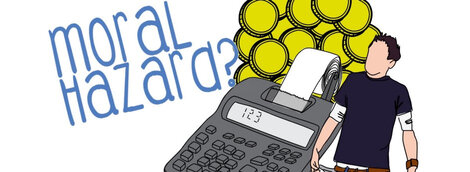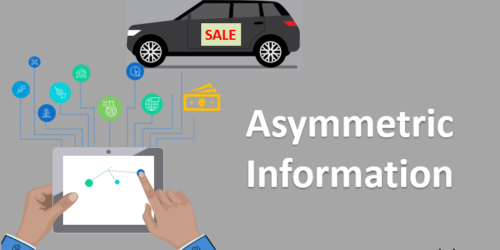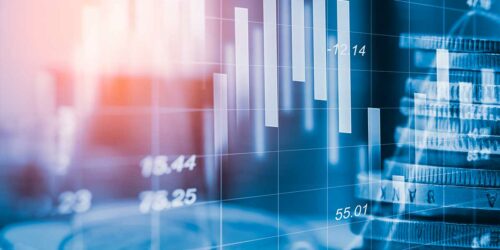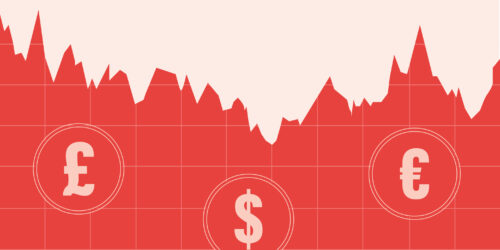International Banking – Asymmetric Information, Adverse Selection, Moral Hazard – 2

Q. Explain briefly Asymmetric Information, Adverse Selection, and Moral Hazard.
A. Asymmetric information occurs when there is a gap between the amount of information that people have. In a market, it exists when a seller has more information than a buyer.
In case of asymmetric information, information is distributed unbalanced. Information necessary to make an informed decision is not known for the party who needs it (Bite-size Econ, 2017).
Adverse selection and moral hazard are 2 types of asymmetric information.
Adverse selection occurs before the transaction, when one party has better information than the other (Moy, 2013). For example, if I’m a smoker and want to buy a health insurance, I don’t tell the insurance company I’m a smoker or I smoke one packet of cigarette every day, because I want to get a lower insurance premium in my policy. Since insurance company doesn’t have enough information about me, they go with my word, and give me better policy terms than I deserve.
Moral hazard occurs after the transaction, when one party breaks his promise and change his behaviour after the transaction takes place (MyFinanceTeacher, 2019). In the same example, I might say to insurance company when negotiating that I’m not going to smoke, overdrink, or overeat that may cause my death faster than usual; but then I break my promise and do all of those after the policy is signed because I already got a good insurance premium. So, moral hazard exists when one party engages in immoral behaviour after the interaction.
These information imbalance cause problems in the financial system and lead to an inefficient market.
Sellers with good products (good sellers) don’t agree to undersell their products, and the sellers with bad products (bad sellers) try to upsell their products. Since buyers don’t know much about the products (don’t have enough information), they think both products are more or less same, and end up buying the bad one since it’s cheaper. So eventually, in the market, only bad products are bought and sold. Good products don’t get sold, so the market doesn’t function efficiently.
Or, in the financial markets, it’s difficult for a regular investor to distinguish between good and bad securities, so he would be willing to pay the average value of good and bad securities (AV). Since the AV is lower than the fair value of good securities, they don’t get issued much by the companies, because they don’t like to be sold undervalued; but bad securities are issued a lot, because the companies would be eager to sell those for AV as the AV above their fair value.
The investors don’t want to invest in bad securities, and good securities are not in circulation either, so the market experiences a deadlock again, it doesn’t function well.
On the other hand, asymmetric information problem is important for the financial system because of the fact that it creates a need for middle-men (as we call agents), and accordingly increases the prices of the goods.
We, buyers, don’t like asymmetric information, don’t want to take a risk, and don’t want to be fooled. So, we usually find a middle-man expert (agent) who can identify the good products than bad products and help us make a decision without getting fooled.
For example, if we are buying cars, we go to car dealers to buy a car rather than buying it from the owner of the car directly because the owner can fool us with the amount of information he has. The car dealer plays a role of expert middle-man here who can check the car and guarantee us that it’s not a bad one.
Asymmetric information problem should be solved in order to have a healthy market. It can be solved by good products’ sellers offering warranties, or more information getting publicly available for the buyers.
Good sellers, in order to prove that their products are good (not fraud), they can offer warranties as they trust their products. This makes buyers identify the good sellers, and the good products start being sold and circulated in the market again.
Advancements in technology and innovation make more information publicly available for everyone every day. That reduces the asymmetric information gap between the parties, help us (buyers) eliminate the middle-men, so decrease the prices we pay for good products.
References
Bite-size Econ. (2017). Is information important? – Asymmetric Information [Video file]. Retrieved June 24, 2020, from https://www.youtube.com/watch?time_continue=430&v=YTz7Cqk-UiY&feature=emb_logo
MyFinanceTeacher. (2019). A symmetric Info: Adverse Selection & Moral Hazard [Video file]. Retrieved June 24, 2020, from https://www.youtube.com/watch?time_continue=417&v=9LNN-pB3ks4&feature=emb_logo
Moy, R. (2013). Adverse Selection [Video file]. Retrieved June 24, 2020, from https://www.youtube.com/watch?time_continue=527&v=yOeMGeix8Ck&feature=emb_logo





